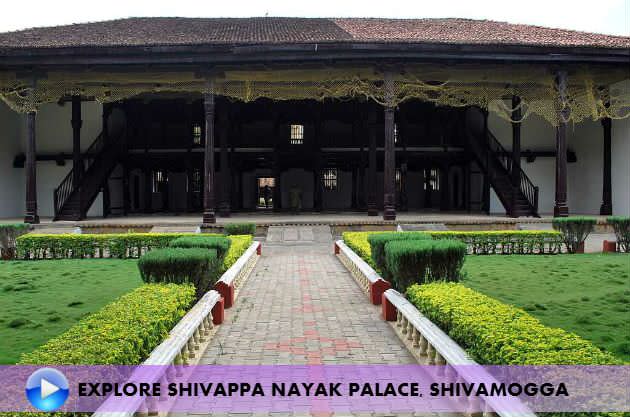Nalknadu Aramane – Coorg’s Forgotten Palace
In the midst of blossoming coffee bushes in interior Coorg lies a forgotten temple, the erstwhile capital of the Haleri kings

The Nalknadu Aramane, the palace of the erstwhile Haleri dynasty of Coorg, now wears a forlorn look.
If stone walls do not a prison make, they do not make a palace either. However, in Coorg, you can find one such monument. Shrouded by dense coffee plantations, it hides behind its walls the secrets of the Haleri Dynasty that ruled the coffee country for more than 200 years from the 17th to the 19th centuries. I am on my way to discover this lost piece of history. Our journey takes us through mists and mountains as we drive through interior Coorg, looking for this historic monument that traces the origins and the end of this dynasty.
The mist plays with the mountains. The hills come alive. As we drive up the Western Ghats, the slopes are carpeted by coffee and cardamom plantations. It had rained just then and the coffee plantations are brimming with snowy-white blossoms sparkling like gems – a blend of diamonds and emeralds in a jeweled setting.
We drive through Virajpet and enter the Nalknadu region at Kakkabe. After paying our respects to the powerful deity Iguthuppa, we walk around the plantations and learn that Coorg’s tryst with coffee started right here in Nalknadu more than a couple of centuries ago. It is believed that the coffee seeds were planted right here by the Mopla community from Kerala who traded with the Arabs. The local people cultivated “wild coffee” here as small holdings came up on the fertile slopes of the Western Ghats that were too steep to grow rice.
We are not in Nalknadu for coffee. We are in search of a small palace hidden somewhere in the hills that had been witness to some events in the lives of the Haleri kings. The origin of the Haleri dynasty is traced to Veeraraja, a nephew of Sadashiva Nayaka of the Ikkeri dynasty who overthrew the local Nayaks, including the chieftains of Bhagamandala and Talacauvery, and went on to become the king of Kodagu with Haleri as its capital. His grandson, Mudduraja, later changed the capital to Madikeri. But our interest is in king Doddaveerarajendra who ruled in the 18th century and was constantly engaged in wars with Tipu Sultan. And that is where our search leads us.
We enter a small hamlet called Yavakapadi in Kakkabe, where the Nalknad Aramane built by Dodda Veerarajendra in the 18th century awaits us. There are coffee plantations all around. A small mud road appears out of nowhere. A beautiful two-storey structure painted in red with a tiled roof, old wall paintings and pillars, gazes at us as we open the portals of the palace. A small mandapa in white is located close by. A drizzle starts as we hear a sound behind us. A caretaker silently opens the main door for us. We are the only visitors. As we soak in the moment, we are given a capsule of history.
Hyder Ali captured Coorg when Lingaraja I died in 1780 and took the young princes, Dodda Veerarajendra and Linga Rajendra, captive. They were sent to a fort in Gorur and a minister ruled over Coorg. While Hyder Ali fought the British, the locals rebelled and overthrew the minister. Tipu Sultan recaptured Coorg, but Dodda Veerrajendra escaped. He fought relentlessly against Tipu Sultan and during one of the wars he retreated into a dense forest in Nalknad. He built a palace here and made it into his operation base and also got married to Mahadevammaji.
The caretaker shows us around. We climb a small ladder and shows us to a hidden chamber in the roof. We are also taken to the torture room, the royal bedrooms, and the main durbar.

The palace, which had seen happier times, was also witness to the end of the dynasty. It was the final refuge of the last king, Chikkaveerarajendra, who spent his last few days hiding from the British who eventually deposed him. In many ways it is the only living symbol of the beginning and the end of the Haleri dynasty.
We head downstairs and sit by the pillars. A government school has now been built adjoining the palace. A bunch of schoolchildren are playing about. I wonder if they realize that their childhood playground was once a battlefield. As I sit there pondering, the rain tumbles down, refreshing the mood and the atmosphere.
Beauty of Mysore during Dussehra
Mysore Palace like every year was illuminated during Navratri.



